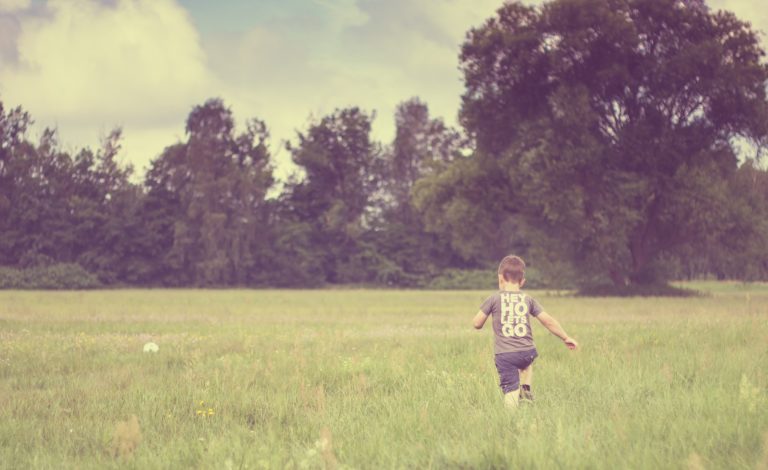Heidi’s Syndrome is known also as ‘nature-deficit disorder’; a term coined by an American author and activist Richard Louv to describe “the psychological, physical and cognitive costs of human alienation from nature, particularly for children in their vulnerable developing years.” While it is not a formal diagnosis, it reflects a medical jargon that is weaving its way to describe things parents knew since forever, kids are happier when they spend some time outside and less so when they’ve been indoors too much.

But why Heidi’s Syndrome? For those who didn’t grow up with the company of a young girl from the Swiss Alps, this analogy means nothing. Heidi is a character from a children’s book by Johanna Spyri written in 1880, later turned into various cartoons and movies, such as the classic one with Shirley Temple (1937). Heidi is a little girl who leads an idyllic life in the valleys of Swiss Alps, surrounded by the mountains and very much in contact with nature. However, as an orphan, she then moves to the city of Frankfurt to join her aunt who works there. And this is where things start to go not so well for Heidi and she seems a shadow of a girl she was in the mountain village, depressed and longing for the lush pastures and her home village (and of course the people she loves most). Also, when Klara, a wheelchair-bound little girl Heidi befriends in Frankfurt spends the summer in Heidi’s village, she almost miraculously gets stronger and starts walking again. The story paints a curious dichotomy of urban setting being depressing and crippling and rural setting being healing and joyful.

So what have we learned since Heidi’s times? Researchers are still investigating just how exactly our lack of contact with nature affects our health, both physical and mental and the results are scary on the one hand, but hopeful on the other. When it comes to children, research suggests they spend about only half the time outside in comparison to their parents, anywhere from 7 to only 4 hours a week (Francis 2018). This results in more child obesity, mental illnesses such as depression, lower concentration and learning abilities, lack of social skills, among others, like for instance short-sightedness (Williams 2018, p. 6). And while before it seemed natural that children spent their time outside, nowadays both parents and children need a little push and encouragement to actually get outside and play.

But of course, it’s not only a kid-related issue. We all need to get some ‘vitamin N’, aka spend time in nature. We should think about it as recharging our body and mind’s internal batteries, but also as unplugging from social media and the hustle of everyday life. The effects of an hour’s walk in the woods, while practicing mindfulness and taking in the landscape, can last about a month! This means lower blood pressure, better mood and sleep, and better productivity at work (Li 2018). For children, spending about 3 hours a day outdoors is thought to be optimal for their overall development. What is even more encouraging is that growing up being surrounded by nature protects children long-term and makes them more resilient to mental illness as adults (Engemannet al. 2019).

As Louv rightly points out, even though the biophilia hypothesis is based on our biological needs, our yearning to be one with nature is also a spiritual one (Louv 2016). Nowadays, as the collective awareness about the benefits of reconnecting with nature is on the rise, we can see more research and literature on the topic. The year 2019 has already been marked by another young girl, this time an activist for the planet Earth, Greta Thunberg. There are also many more outdoor kindergartens, where children spend the entire day outside, in all weather. We are also seeing more organisations that promote and educate parents, children, and other 'stakeholders' in the importance of being in touch with nature in childhood and beyond, like the #nochildleftinside movement that mirrors the US national 'No Child Left Behind' Act or local NGOs like Kraków-based 'Dzieci w Naturę'. The movement of forest bathing or the Japanese art of ‘shinrin-yoku’ is also getting more attention from the general public. All in all, for those searching for the antidote for the ills of indoor-itis and Heidi’s Syndrome, all it takes is getting out of the house and into nature every, and that means EVERY, SINGLE, day.
Louv recalls an old Jewish story that builds on the idea of spending time in nature being a time for our senses and also for our souls: “The child of a certain rabbi used to wander in the woods. At first his father let him wander, but over time he became concerned.” One day, he said to his son, ‘“You know, I have noticed that each day you walk into the woods. I wonder why you go there?’ The boy answered, ‘I go there to find God.’ ‘That is a very good thing,’ the father replied gently. ‘I am glad you are searching for God. But, my child, don’t you know that God is the same everywhere?’ ‘Yes,’ the boy answered, ‘but I’m not.’” Perhaps it is a bit of an overstatement, but really, taking our children outside can literarily change their little worlds and the future of our planet, because if we let children into the forest (or a meadow or a park for that matter), they will become adults who will protect it (Li 2018).
P.S. If you’re curious how Heidi’s story ends, it is a happy ending as she gets to be close to her grandfather and nature back in the Alps.
References:
Aarhus University (2018) Being surrounded by green space in childhood may improve mental health of adults, [press release], 28 Feb, available: https://www.eurekalert.org/pub_releases/2019-02/au-bsb022019.php
Francis, G. (2018) “Kids spend just ONE HOUR a day outdoors but two hours staring at screen”, The Mirror, 15 Jul, available: https://www.mirror.co.uk/news/uk-news/kids-spend-just-one-hour-12923237
Engemann,K. Bøcker Pedersen, C., Arge, L., Tsirogiannis, C., Mortensen, P.B, and Svenning, J-S. (2019) “Residential green space in childhood is associated with lower risk of psychiatric disorders from adolescence into adulthood”, PNAS, 116 (11), 5188-5193. DOI: 10.1073/pnas.1807504116
Li, Qing (2018) Shinrin-yoku. The Art and Science of Forest-Bathing, London: Penguin Random House.
Louv, R. (2009) No More "Nature-Deficit Disorder",Psychology Today(online), 28 Jan, available: https://www.psychologytoday.com/us/blog/people-in-nature/200901/no-more-nature-deficit-disorder
Louv, R. (2016) ‘Vitamin N for the soul’, Tikkun, 31(4): 58-61.
Williams, F. (2017) The Nature Fix, New York: Norton & Co.

